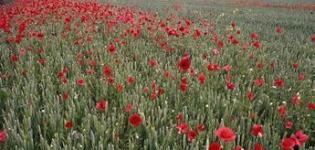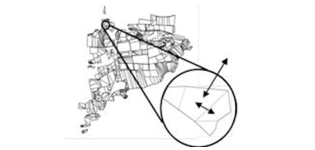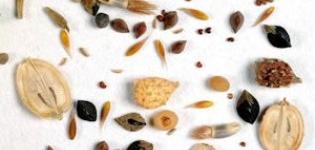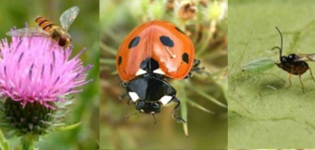Environmental impact/ risk assessment/ restoration
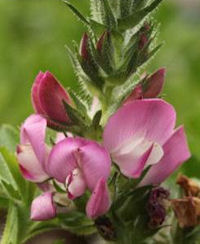 Knowledge of seeds, plants, invertebrates and food webs is increasingly in demand as a background to ecological or environmental risk assessment. For example, engineering projects that impinge on farmland, such as the laying of long-distance pipelines, need to be assessed for their impact on the arable flora and food web. And expertise in GM crops and pesticides is combined to facilitate a broad, system-scale approach to the risk assessment of biotech crops. We contribute to formal guidance documents and are active on European Food Safety Authority committees and working groups.
Knowledge of seeds, plants, invertebrates and food webs is increasingly in demand as a background to ecological or environmental risk assessment. For example, engineering projects that impinge on farmland, such as the laying of long-distance pipelines, need to be assessed for their impact on the arable flora and food web. And expertise in GM crops and pesticides is combined to facilitate a broad, system-scale approach to the risk assessment of biotech crops. We contribute to formal guidance documents and are active on European Food Safety Authority committees and working groups.
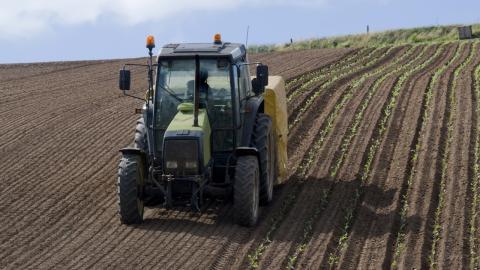
 The common weed species owe their resilience and persistence to variation in life-history traits within the species. The genus Capsella provides a suitable model on which to base a range of studies in such intra-specific variation. Capsella bursa-pastoris is currently the commonest broadleaf (dicot) weed of fields.
The common weed species owe their resilience and persistence to variation in life-history traits within the species. The genus Capsella provides a suitable model on which to base a range of studies in such intra-specific variation. Capsella bursa-pastoris is currently the commonest broadleaf (dicot) weed of fields.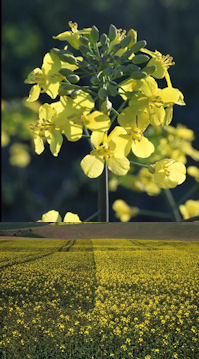 Crops give rise to volunteers (weeds within fields) and ferals (living outside fields) that can hold and transmit genes and traits and interact with wild plant relatives. Volunteers such as oilseed rape and beet are important competitors of crops. Volunteers and ferals cause significant problems for managing coexistence between different types of crop, particularly GM and non-GM varieties. Research in this area began in the early 1990s and by a combination of population biology, landscape-scale approaches, molecular detection and modelling assumed a global lead. Concepts, methods and models are increasingly relevant to a range of non-GM problems.
Crops give rise to volunteers (weeds within fields) and ferals (living outside fields) that can hold and transmit genes and traits and interact with wild plant relatives. Volunteers such as oilseed rape and beet are important competitors of crops. Volunteers and ferals cause significant problems for managing coexistence between different types of crop, particularly GM and non-GM varieties. Research in this area began in the early 1990s and by a combination of population biology, landscape-scale approaches, molecular detection and modelling assumed a global lead. Concepts, methods and models are increasingly relevant to a range of non-GM problems.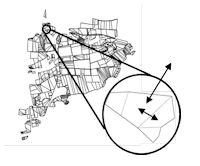 Weeds undergo complex life-cycle dynamics involving the buried seedbank, emerged populations, reproduction, dispersal, gene flow and genetic change. Individual-based models (IBMs) of plant populations have been an integral part of the programme since the late 1990s, finding specific use by predicting coexistence of GM and non-GM traits and trait shifts due to environment and management.
Weeds undergo complex life-cycle dynamics involving the buried seedbank, emerged populations, reproduction, dispersal, gene flow and genetic change. Individual-based models (IBMs) of plant populations have been an integral part of the programme since the late 1990s, finding specific use by predicting coexistence of GM and non-GM traits and trait shifts due to environment and management.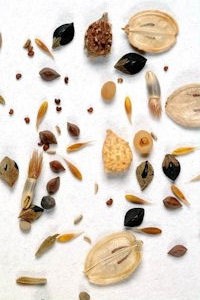 Weeds of arable land and grassland have a dual role - they reduce the yield of crops by competing for resources and they support the essential food web. The weeds are sustained by a soil seedbank - the seedbank decays through predation and disease and is replenished by new seed dropped by reproducing plants. Through these processes, the seedbank changes in abundance, species composition and life history traits.
Weeds of arable land and grassland have a dual role - they reduce the yield of crops by competing for resources and they support the essential food web. The weeds are sustained by a soil seedbank - the seedbank decays through predation and disease and is replenished by new seed dropped by reproducing plants. Through these processes, the seedbank changes in abundance, species composition and life history traits.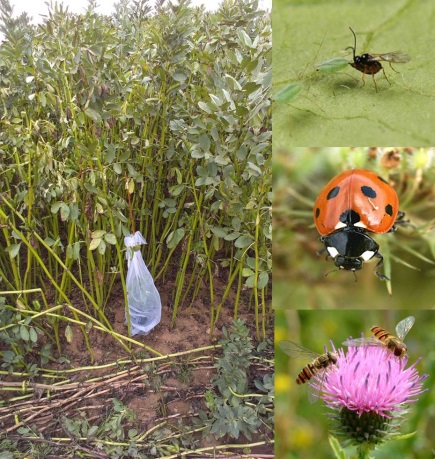 Reduction in the availability and quality of plant food resources through arable intensification and habitat fragmentation has been cited as a major cause of the decline in pollinators in the UK and worldwide, and is likely to have a negative impact on the activity and abundance of natural enemy species that rely on floral resources in their adult life stages. Many pollinator and natural enemy groups disperse over large distances in search of pollen and nectar, and this might be exacerbated in intensively-managed systems with low resource diversity. Alternative management systems that lead to increases in resource availability and quality for these insects are therefore likely to promote both diversity, through niche differentiation, and fitness, by reducing the need for insect foraging over large distances. Thus, management to increase within-field and farm-scale vegetation diversity is one option to combat declines in pollinator populations and promote numbers and activity of natural enemies.
Reduction in the availability and quality of plant food resources through arable intensification and habitat fragmentation has been cited as a major cause of the decline in pollinators in the UK and worldwide, and is likely to have a negative impact on the activity and abundance of natural enemy species that rely on floral resources in their adult life stages. Many pollinator and natural enemy groups disperse over large distances in search of pollen and nectar, and this might be exacerbated in intensively-managed systems with low resource diversity. Alternative management systems that lead to increases in resource availability and quality for these insects are therefore likely to promote both diversity, through niche differentiation, and fitness, by reducing the need for insect foraging over large distances. Thus, management to increase within-field and farm-scale vegetation diversity is one option to combat declines in pollinator populations and promote numbers and activity of natural enemies.